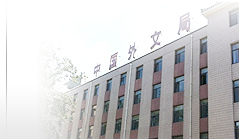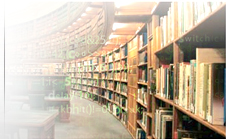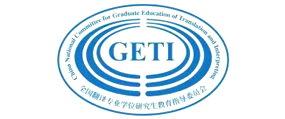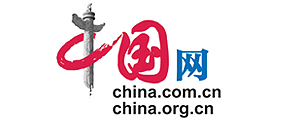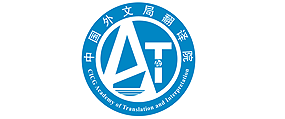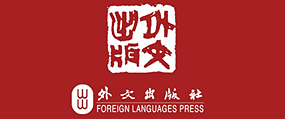目录
翻译与五四运动 /
05 翻译精神与五四运动—试论翻译之于五四运动的意义 许钧13 翻译在新文化运动中的历史作用及未来前景 王宁
22 五四运动前后马克思主义在中国的翻译与传播 王东风 赵嘏
理论研究 /
33 翻译的范畴转换及其认知阐释 文旭 余平 司卫国44 “翻译修辞学”之辨与辩 陈小慰
译史纵横 /
55 梁宗岱留学欧洲时期的翻译和创作探微 周永涛63 利玛窦的文化身份与其翻译策略和效果 高胜兵 王娟
译介研究 /
75 郭沫若所译“维特”形象在中国的传播与接受 张勇86 “马伯乐”的前世今生—萧红小说《马伯乐》的翻译、续书与续译 孙会军
翻译教学 /
96 新形势下我国翻译专业教育内涵建设——关于翻译博士专业学位(DTI)设置的思考与探索 张爱玲 丁宁105 翻译硕士培养过程中的思政教育实践研究—以西北师范大学《国策与省情》课程为例 曹进 陈霞
翻译评论 /
114 译出-译入模式下中国文学英译修改过程研究—以《海上花列传》英译为例 张丹丹书刊评介 /
124 符号学与多模态视角下的儿童文学翻译—兼评《翻译绘本》 王洪林学术视点 /
130 无本回译研究纵览 黎昌抱 屠清音学术争鸣 /
141 科学经典翻译中的偏失及传播—以库恩《科学革命的结构》为例 方芳翻译技术 /
150 语料对齐工具的性能比较与选择 蔡辉学术访谈 /
156 视听翻译走向云端—何塞·迪亚兹-辛塔斯教授访谈录 苗菊 侯强实践探索 /
161 古代手工业术语英译探究—以《考工记》为例 许明武 罗鹏自学之友 /
168 Gained in Translation (Tim Parks) 周领顺 陈静 译171 翻译的主观与理据 周领顺 陈静
176 “西医东渐”的启示(林巍) 林巍 译
181 医学翻译:词语与句式的辨析 林巍 赵友斌
词语选译 /
185 《中国关键词》(节选)英文摘要 /
信息广角 /
191 2019暑期全国高等院校翻译专业师资培训课程及拟定授课教师名单信息广角 /
第九届亚太翻译论坛公告
新中国翻译事业70年论坛暨2019中国翻译协会年会一号公告
本期主要论文摘要
翻译与五四运动
翻译精神与五四运动
—试论翻译之于五四运动的意义
许钧 浙江大学
—试论翻译之于五四运动的意义
许钧 浙江大学
摘要:今年是五四运动一百周年。本文聚焦翻译与五四运动的关系,从语言、文学、文化、思想层面展开思考,就翻译与五四运动的深刻联系以及翻译对五四运动的直接与间接的影响进行探讨,继而从翻译的开放与创造精神出发,就翻译之于五四运动的意义作了概要性评述。
Translation as a Spiritual Pursuit during China’s May Fourth Movement
By XU Jun (Zhejiang University, Hangzhou, China) p.5
Abstract: In celebration of the centennial of China’s May Fourth Movement, this article explores the relationship between translation and this historic movement from the perspectives of language, literature, culture, and intellectual trends. It discusses the way translation was profoundly entangled with the May Fourth Movement, directly and indirectly contributing to its emergence and development. By helping to endow the Movement with an ethos of openness and creativity, translation became a spiritual pursuit throughout this epoch-making event in China’s modern history.By XU Jun (Zhejiang University, Hangzhou, China) p.5
Keywords: translation; May Fourth Movement; spirit; influence; significance
翻译在新文化运动中的历史作用及未来前景
王宁 上海交通大学
王宁 上海交通大学
摘要:在纪念五四新文化运动一百周年之际,我们更加清醒地认识到,翻译在新文化运动中扮演了一个不可或缺的重要角色。我们甚至可以这样说,没有翻译就没有新文化运动的兴起;没有翻译,马克思主义就无法传入中国。当然,在这里,翻译并非以往人们所认识的那样只是居于语言转换的层面,而更带有文化阐释和文化变革的催化剂作用。同样,在当前所实施的中国文化和文学走出去的战略中,我们同样认识到:没有翻译,中国的文学和人文学术研究就不可能走向世界。我们从新文化运动的成败得失中汲取经验和教训,在将中国文化和人文学术著作译介到国外时,不能仅凭语言文字上的转换,也许更要依靠一种跨文化阐释式的翻译,才能有效地将中国文化的精神实质译介到全世界。在当前高科技和人工智能的飞速发展中,传统翻译的一些功能将被取代,但是在将中国文化及人文学术著作译介到国外时,这种跨文化阐释式的翻译将起到不可替代的作用。
Translation’s Indispensable Role in China’s Modern History: From the New Culture Movement to the New Era of National Rejuvenation
By WANG Ning (Shanghai Jiao Tong University, Shanghai, China) p.13
Abstract: The centennial of China’s New Culture Movement (NCM) reminds us once again of the crucial role translation played in this historic event. Without the crucial contributions from translation, the NCM would not have taken place, nor would Marxism have been introduced into China in the immediate wake of this Movement. And since the founding of the Communist Party of China could as a result have been postponed for years, the history of modern China would certainly have been rewritten. The translation referred to here, however, should not be understood in the conventional sense of cross-linguistic transfer of meaning. Rather, it refers to a special mode of cultural interpretation and a catalyst for cultural transformation. In this latter sense, we have every reason to believe that however the mode of translation would change in the age of IT and AI, it would continue to play just as crucial a role throughout China’s New Era of development, contributing vitally in particular to the country’s current efforts to promote its literature and culture abroad.By WANG Ning (Shanghai Jiao Tong University, Shanghai, China) p.13
Keywords: New Culture Movement; translation; interpretation; transformation; Marxism; Sinicization
五四运动前后马克思主义在中国的翻译与传播
王东风 赵嘏 中山大学
王东风 赵嘏 中山大学
摘要:五四运动前后,翻译对马克思主义在中国的传播起到了举足轻重的作用。按时间先后,这一时期的马克思主义在中国的翻译与传播主要经历了三个阶段。第一阶段为19世纪70年代开始的接触期。这一时期主要以零散式的方式译介。第二阶段为五四前社会主义思想的译介期,这一时间段是1902-1912年,高峰期是1902-1903年,译介的内容主要是日本学者对西方社会主义的研究。第三阶段为1918年后的共产主义思想的翻译期。在这一时期,俄国十月革命和五四运动的爆发使马克思主义在中国的译介全面展开,内容也主要转向马克思本人的相关著作,这为之后的中国共产党的成立和中国的新民主主义革命提供了强大的理论基础。本文拟从翻译学的角度,对这一段历史做一回顾与综述。
理论研究
翻译的范畴转换及其认知阐释
文旭 余平 司卫国 西南大学
文旭 余平 司卫国 西南大学
摘要:认知翻译学主张将认知科学及认知语言学的理论原则和研究方法与翻译研究结合起来,是翻译研究的一种新范式。范畴与范畴化是认知语言学理论体系的重要组成部分。将范畴化理论应用于翻译研究可以有效规避中西传统译论中二元对立的思维模式,也为翻译理论的发展和应用注入了新的活力。但以往范畴化理论视角下的翻译研究在研究对象、研究范围以及研究视角上仍存在一些值得反思的问题,翻译的范畴转换模式和转换过程也需要进一步探索和挖掘。有鉴于此,本文基于认知语言学的范畴化理论,构建翻译的范畴转换模式,探讨翻译的范畴转换过程,并揭示翻译范畴转换的认知基础和认知机制,以期回归翻译作为认知活动的本质。
Category-Based Transformation in Translation and Its Cognitive Interpretation
By WEN Xu, YU Ping & SI Weiguo (Southwest University, Chongqing, China) p.33
By WEN Xu, YU Ping & SI Weiguo (Southwest University, Chongqing, China) p.33
Abstract: As a new trend and paradigm in TS, cognitive translatology brings to bear on the study of translation the principles and methods of cognitive linguistics, of which category and categorization are two crucial components. While it is well-known that applying categorization theory to translation studies would help counter the tendency in traditional theories of translation toward binary oppositions, what other potentials or problems could result as a consequence of seeing translation anew from the perspective of categorization theory remains under-studied. For a remedy of such a situation, the present work proposes a category-based transformational model of translation. By elaborating on the conditions of possibility as well as the process for category transformation to take place in translation, we explore translation’s cognitive bases and mechanisms, in a bid to shed more light on the cognitive nature of translation activities.
Keywords: categorization; cognitive translatology; category transformation; cognitive basis; cognitive mechanism
“翻译修辞学”之辨与辩
陈小慰 福州大学
陈小慰 福州大学
摘要:本文从“翻译修辞学”在当今时代应有的题中之意入手,借鉴当代西方“新修辞”理论研究范式,围绕该学科之“名”与“实”以及作为翻译研究分支领域的前景与挑战等方面进行探索。从宏观、中观及微观角度探讨其对认知当今语境下翻译活动所具有的独特学术视角、学科内涵、理论贡献及其对翻译实践产生的积极意义;同时直面其必然面对的挑战,提出解决途径。旨在构建反映现时代特征和需求的翻译修辞学理论和应用体系,弥补缺失,丰富翻译理论及应用研究,带来认知上的提升,更好地服务国家对外话语传播。
Translational Rhetoric: A Proposal for Its Definition and Thematization
By CHEN Xiaowei (Fuzhou University, Fuzhou, China) p.44
By CHEN Xiaowei (Fuzhou University, Fuzhou, China) p.44
Abstract: This paper explores the way to define and thematize “Translational rhetoric,” a sub-area of translation studies, within the framework of the New Rhetoric paradigm and in response to the changing socio-cultural conditions of our time. By considering its “name” and “nature,” as well its potentials and challenges, from macroscopic, meso and microscopic perspectives, the paper highlights the unique approach, disciplinary implications, theoretical contributions and positive guidance the proposed paradigm may bring to the studies of the rhetorical dimension of translation. A theoretically informed and practicable approach to studying translational rhetoric, “translational rhetoric” holds the promise of improving China’s TS, enabling it to better serve China’s international communication.
Keywords: translational rhetoric; definition; name and nature; promise; challenge; communication
译史纵横
梁宗岱留学欧洲时期的翻译和创作探微
周永涛 四川大学/ 遵义师范学院
周永涛 四川大学/ 遵义师范学院
摘要:随着新史料的陆续发现,梁宗岱留学欧洲时期的文学活动逐渐浮出水面,他这一时期的翻译和创作复杂而重要,还没有得到充分的研究。本文对此加以详细梳理,探讨其背后的社会、文化、历史原因,尤其是梁宗岱和法国文坛大家如瓦莱里和罗曼·罗兰等的交往,对其翻译和创作都产生了决定性的影响。他在这一时期的成就以翻译为主,尤以翻译陶渊明诗文和自己的诗歌为亮点,在今天看来尤其难能可贵,他所取得的巨大成功,对当下的中外文化交流和“中国文化走出去”都有较大的参考价值和启发意义。
Liang Tsong Tai’s Translating and Writing Activities during His European Sojourn
By ZHOU Yongtao (Sichuan University, Chengdu, China) p.55
By ZHOU Yongtao (Sichuan University, Chengdu, China) p.55
Abstract: The seven years in the 1920s that Liang Tsong Tai spent travelling and studying in Europe went a long way toward shaping up his career as a celebrated scholar-writer-translator, for the large amount and very significant translations and writings Liang did during this period laid a solid foundation for the professional developments all through his life. This paper offers a detailed examination of the works he accomplished while sojourning in Europe, and explores the social, cultural and historical factors that account for what he did. Standing out among these factors is his well-known friendship with European literary giants such as Paul Valéry and Romain Rolland, which exerted crucial influences on his work in translating both classical Chinese poems and poems in Chinese which he himself had composed. His success in these endeavors sheds useful lights even on today’s cross-cultural communication.
Keywords: Liang Tsong Tai; Europe; translation; writing; Paul Valéry
利玛窦的文化身份与其翻译策略和效果
高胜兵 王娟 安徽理工大学
高胜兵 王娟 安徽理工大学
摘要:Deus(God)、anima(soul)和diligere/ caritas(to love/ love)是天主教话语体系中的三个重要词语(概念),它们的现代汉语对应词通常分别是“上帝”、“灵魂”和“爱”,这种对应关系是始于利玛窦的《天主实义》。本文基于文本的解读,分析“上帝”、“灵魂”和“爱”三个译词在《天主实义》中的产生,从而探讨利玛窦的文化身份与其翻译策略和效果的紧密关系。
译介研究
郭沫若所译“维特”形象在中国的传播与接受
张勇 中国社会科学院
张勇 中国社会科学院
摘要:郭沫若翻译的《少年维特之烦恼》在现代中国引起强烈反响,但是“维特”形象被中国读者所接受的重自由、强个性的典型性格特征,与歌德创作此形象本身所具有的西方悲情意识和时代内涵形成较为鲜明的对比。通过对郭沫若译介《少年维特之烦恼》的本源探究,可以明显地发现他推介“维特”形象最终的指归在于对五四新文化运动命题的回应和深化,《少年维特之烦恼》通过与《女神》形成的创作与译介的双位一体的双响炮,形成了对现代中国文化的全面参与与影响的态势,这也为外国文学典型形象如何合理有效的参与到中国文化发展的进程,并取得良好的传播效果提供了可供借鉴的思路和方法。
Werther v. Weite: Guo Moruo’s Rewriting of Goethe in His Chinese Rendition of Die Leiden des jungen Werthers
By ZHANG Yong (Guo Moruo Memorial Hall, Chinese Academy of Social Science, Beijing, China) p.75
By ZHANG Yong (Guo Moruo Memorial Hall, Chinese Academy of Social Science, Beijing, China) p.75
Abstract: Pondering on why Guo Moruo’s 1922 translation of Die Leiden des jungen Werthers/The Sorrows of Young Werther should have such a strong cross-cultural impact on the development of modern consciousness in China, one could not but notice a sharp contrast between the free spirit and the self-assertive personality embodied by the character of Weite, the protagonist of the Chinese version, and the sentimental and melancholy image projected by Goethe’s original Werthers. The marked difference in characterization is explainable in reference to the equally striking difference between the two cultural-historical contexts in which Goethe and Guo lived and worked respectively. An even more relevant factor, however, is the fact that Guo Moruo meant this translation as both a response to the call of the May Fourth New Culture Movement and an effort to push the Movement further on. With this translation and his equally influential collection of original poems entitled The Goddess, Guo managed to engage himself fully in, and made a significant difference to, the formation of modern Chinese culture. From his case, lessons could be drawn about how translated literature could be made to produce desired cross-cultural effects on and thus contribute to the socio-cultural developments in China.
Keywords: Guo Moruo; Goethe; The Sorrows of Young Werther; translation; cultural effect; China
“马伯乐”的前世今生
—萧红小说《马伯乐》的翻译、续书与续译
孙会军 上海外国语大学
—萧红小说《马伯乐》的翻译、续书与续译
孙会军 上海外国语大学
摘要:《马伯乐》是我国现代著名女作家萧红的一部没有完成的小说。美国翻译家葛浩文不仅将其翻译成英文,还用英语续写了小说的后续发展和最终结局,并且请夫人林丽君将英文续写译成中文,使中、英文读者在萧红去世76年后,都能有机会读到一部完整的《马伯乐》。本文在钩沉原文上下卷“合璧”史实的基础上,考察葛浩文在翻译、续写原作以及林丽君在汉译英文续写过程中的选择及效果,认识到翻译作为一种社会实践,不是一个简单的从原文到译文的线性转换过程,而是各个行为人(agent)不断协商合作的过程,而且各个行为人的身份往往不是泾渭分明的,译者有时需要同时扮演学者、推介者、作者、编辑、译者等多重角色,同时不忘时时把自己放在读者的位置进行考量,而在这部小说的翻译、续写和续译过程中,译者多重身份相互渗透的现象尤为突出。作为中国现代文学翻译史上跨越时空的一个创举,《马伯乐》英译本和汉语完整版的完成,是中外翻译家携手打造文学经典的一个有益尝试,对于推动中国文学“走出去”具有一定的启示意义。
The Afterlife of Xiao Hong’s Novel Ma Bo’le as a Case in Multiple Authorship
By SUN Huijun (Shanghai International Studies University, Shanghai, China) p.86
By SUN Huijun (Shanghai International Studies University, Shanghai, China) p.86
Abstract: Because of her untimely death in 1942, Xiao Hong was unable to finish writing her last novel Ma Bo’le. The ending-less story however caught the attention of Howard Goldblatt, who in early 1980s turned the unfinished manuscript into English, then came up with a “complete” English version of the story in 2018 by adding to his 1980’s rendition an ending of his own invention, and finally had his wife-collaborator Lin Li-chun turn the added ending into Chinese, thus made available a “complete” version of Xiao Hong’s story in Chinese 76 years after the original writer’s death. The strange twists and turns in Ma Bo’le’s afterlife show that translation is far from a simple and linear process from the source text to the target text. Rather, it is a process of collaboration among agents of translation, often a process of negotiations between the translator and the author, the editor, the reader, and other agents involved. The role each agent plays is incapable of being defined clearly. As the case of Ma Bo’le indicates, the translator could also serve in other capacities, frequently doubling as a researcher, a promoter, or even a co-author. A keen awareness of the possibility as well as the potentials of what may be called “multiple authorship” will help in Chinese literature’s present endeavor to “go global.”
Keywords: Ma Bo’le; English Translation; afterlife; multiple authorship
翻译教学
新形势下我国翻译专业教育内涵建设
——关于翻译博士专业学位(DTI)设置的思考与探索
张爱玲 上海外国语大学 ∣ 丁宁 浙江外国语学院
——关于翻译博士专业学位(DTI)设置的思考与探索
张爱玲 上海外国语大学 ∣ 丁宁 浙江外国语学院
摘要:本文首先回顾了国内数位专家学者梳理出的翻译专业教育方面的现存问题,并在此基础上就我国翻译专业教育的进一步改革与发展提出了一些思考,尤其是翻译博士专业学位(DTI)的设置需要考虑的诸多因素。作者以上海外国语大学高翻学院翻译博士专业学位(试点)设置为例,强调翻译专业教育要注重跨学科性,注重学科业界融通,让翻译专业人才的培养向更符合社会对理论研究和实践人才需求的合理化方向发展。
翻译硕士培养过程中的思政教育实践研究
—以西北师范大学“国策与省情”课程为例
曹进 陈霞 西北师范大学
—以西北师范大学“国策与省情”课程为例
曹进 陈霞 西北师范大学
摘要:本研究是新形势下向翻译硕士开展的有针对性的思政教育的有益尝试。在翻译硕士培养过程中开展思政教育、实现课程思政与专业课程的无缝对接是翻译人才培养质量的有力保障。西北师范大学的“国策与省情”课程以《习近平谈治国理政》和甘肃省情作为教学内容,采用课内、课外学习相结合的授课方式,课程的思政教育特色对翻译硕士具有显性引导和隐性塑造功能,实现了思政课程与课程思政的有机结合。
翻译评论
译出-译入模式下中国文学英译修改过程研究
—以《海上花列传》英译为例
张丹丹 齐齐哈尔大学
—以《海上花列传》英译为例
张丹丹 齐齐哈尔大学
摘要:本文聚焦张爱玲的《海上花列传》前两回英译和孔慧怡对其两次修订的痕迹,在构建翻译修订痕迹标注体系的基础上,从正文和注释两大方面对比三个文本的异同,概括并总结孔慧怡两次修订的内容和特征,以期探索文学英译由译出到译入模式的修改与蝶变过程,为中国文学更好地“走出去”提供些许借鉴。研究发现,在尊崇原文整体叙事结构和语义翻译架构基础上,修订的着力点更应该集中在对译文语篇功能的衔接、连贯与语言通俗性以及行文节奏韵律之上,同时要注重并构建英语的中国文学及文化系统。
The Sing-Song Girls of Shanghai as the Product of a Translational Relay
By ZHANG Dandan (Qiqihar University, Qiqihar, China) p.114
By ZHANG Dandan (Qiqihar University, Qiqihar, China) p.114
Abstract: The Sing-Song Girls of Shanghai , an English translation of a late-Qing Chinese novel, came out of the joint efforts by Eileen Chang, who provided “a very rough draft” of the English rendition, and Eva Hung, who offered two successive revisions of Chang’s version and turned it into a fully publishable literary text in English. This paper looks into their productive “relay” by first setting up an interpretive frame within which the traces of Hung’s revisions were marked systematically and categorized statistically. A comparison between Hung’s two revisions follows, leading to the identification of their differences and similarities and the discovery of the thrust of Hung’s revisionary efforts as well. While both revisions show respect for the overall structure of the original story and uphold the first translator’s principle of semantic translation, they focus on improving the draft translation’s readability and fluency by adding to its cohesion and coherence. An emphasis is also made throughout the process of revision on systematically constructing a general framework in which China’s literature and culture are rendered accessible within the target language and culture.
Keywords: The Sing-Song Girls of Shanghai; English translation; revision process; Eileen Chang; Eva Hung
书刊评介
符号学与多模态视角下的儿童文学翻译
—兼评《翻译绘本》
王洪林 四川大学/浙江万里学院
—兼评《翻译绘本》
王洪林 四川大学/浙江万里学院
摘要:儿童文学翻译作为文学翻译的重要组成部分,逐步受到翻译研究界重视。不过,绘本作为当下儿童文学重要组成部分,其翻译研究依然相对薄弱。由丽塔·奥伊蒂宁、安·克托拉与梅丽莎·贾拉维尼合作撰写的《翻译绘本》于2018年初出版,是继丽塔·奥伊蒂宁撰写2000年版《为儿童而译》之后绘本翻译研究的最新力作。该书从符号学与多模态双重视角系统梳理了绘本翻译研究的最新进展,为未来绘本翻译的跨界研究提供了新视角,对我国儿童文学翻译尤其绘本翻译研究具有借鉴意义。
Rethinking Translation of Children’s Literature from Semiotic and Multimodal Perspectives: A Review of Translating Picturebooks
By WANG Honglin (Sichuan University, Chengdu, China & Zhejiang Wanli University, Ningbo, China) p.124
By WANG Honglin (Sichuan University, Chengdu, China & Zhejiang Wanli University, Ningbo, China) p.124
Abstract: Even though the translation of children’s literature in general has aroused more and more attention from the scholars concerned, the area of picturebook translation had not yet been explored in any comprehensive manner until the 2018 publication of Translating Picturebooks: Revoicing the Verbal, the Visual, and the Aural for a Child Audience by Riitta Oittinen, et al. A follow-up on Riitta Oittinen’s Translating for Children (2000), this collaborative work not just offers a survey of the latest accomplishments in translation studies of children’s literature, but focuses our attention on the translation of picturebooks in particular. With the dual perspectives of semiotics and multimodality it introduces on the subject, this new publication chart new interdisciplinary directions for future studies on translating children’s literature, both in China and abroad.
Keywords: children’s literature; picturebook translation; semiotics; multimodality; critical analysis
学术视点
无本回译研究纵览
黎昌抱 屠清音 浙江财经大学
黎昌抱 屠清音 浙江财经大学
摘要:无本回译是一种非典型意义上的回译形式,是指译者将作者运用外语(本文指英语)创作的中国题材作品(即异语作品)回译成汉语并返销给中国读者或汉语读者的行为或这一行为的结果。近年来,无本回译现象逐渐引起学界关注,虽然在无本回译定义及范畴界定、异语写作者及其作品分类、无本回译及其相关研究等方面已有所建树,但还有较大拓展空间:(1)无本回译概念界说及范畴界定研究还可以有所作为;(2)继续个案研究同时,对整体异语作品无本回译的共性和个性研究有着很大拓展空间;(3)在无本回译的运作机制、文化间性、文本间性、原则策略、评价标准等方面的系统研究和理论思考仍然大有可为。
学术争鸣
科学经典翻译中的偏失及传播
—以库恩《科学革命的结构》为例
方芳 中国科学技术大学/合肥学院
—以库恩《科学革命的结构》为例
方芳 中国科学技术大学/合肥学院
摘要:科学经典译本在传播科学思想的同时往往会出现一些翻译上的偏失或偏误。本文对库恩《科学革命的结构》译本中出现的偏误进行了全面梳理和归类分析,检索出文献被误引用的情况及其对科学传播产生的影响。看似微不足道的翻译偏失,往往在被误引用和误读后被放大,从而对学术概念或观点产生误导。在不同类型的偏误中,概念上的偏失由于是隐性的因而波及面最广。因此,以“理论为翻译的最小单位”对于准确传播科学思想尤其必要。
Erroneous Translation of Scientific Classics and the Miscommunication of Scientific Knowledge: With the Chinese Rendition of The Structure of Scientific Revolutions as an Exemplar
By FANG Fang (University of Science and Technology of China & Heifei University, Hefei, China) p.141
By FANG Fang (University of Science and Technology of China & Heifei University, Hefei, China) p.141
Abstract: Errors in the translation of scientific classics is hard to avoid, as is the translation-caused miscommunication of scientific ideas. This paper identifies problematic renditions in the Chinese translation of The Structure of Scientific Revolutions, classifies these errors into different types, and, on the basis of the way the erroneous renditions have been unwittingly cited, undertakes to estimate the mistranslation-caused consequences to scientific communication. The study shows that even what seems to be an innocuous mistake in such a translation, when uncritically cited and interpreted, could become seriously misleading and thus snowball into a major problem in scientific communication. And among the types of errors identified, the conceptual one tends to be the most insidious, as mistakes of this type are usually deep-lying and implicit. For translators of scientific texts, therefore, the theoretical point ought to be taken as the minimal unit of translation.
Keywords: scientific classic; translation; translation error; The Structure of Scientific Revolutions; mistaken citation; communication of scientific knowledge
翻译技术
语料对齐工具的性能比较与选择
蔡辉 中央财经大学
蔡辉 中央财经大学
摘要:本文利用实验研究的方法,以文学、财经和科技三种文体为样本,对6款常见的语料对齐工具进行了比较研究。研究发现:(1)除Déjà Vu X3之外,相同文本使用docx和txt格式对对齐结果没有影响;(2)Transmate、ABBYY Aligner 2.0和memoQ 2015的对齐准确率位居前列,表现稳定;(3)使用不同体裁的文本,对齐质量也会不同。科技文本的对齐效果最佳,其次是财经和文学;(4)对齐准确率是评测对齐质量的主要指标,但不是唯一指标;(5)距离完美对齐的距离、句段长短、标签数量也影响对齐质量。本文还提出了对齐准确率的概念和计算公式。本研究对对齐工具的选择和改进具有一定参考作用。
学术访谈
视听翻译走向云端
—何塞·迪亚兹-辛塔斯教授访谈录
苗菊 侯强 南开大学
—何塞·迪亚兹-辛塔斯教授访谈录
苗菊 侯强 南开大学
摘要:视听翻译的实践、教学与研究在西方的前沿发展状况如何?翻译技术的研发应用对视听翻译产生了何等影响?在海量视频信息社会,视听媒体更迎合了信息传播、知识再现、认知方式的需要。本访谈呈现国际著名专家的见解,反映视听翻译技术工具的使用现状、相关课程的教学内容、视听翻译研究包罗万象的多学科发展,让读者看到视听翻译实践未来的广阔空间。
实践探索
古代手工业术语英译探究
—以《考工记》为例
许明武 罗鹏 华中科技大学
—以《考工记》为例
许明武 罗鹏 华中科技大学
摘要:作为我国古代第一部官营手工业典籍,《考工记》记载着先秦时期的工艺制造过程和检验标准。该书由闻人军首次全译成英文。本文将书中诸多术语分为四类,即工种、工序、工具、成品及其部件,并对这些术语翻译进行描述性研究和分析,探究手工业术语翻译方法,以期对古代科技典籍外译提供切实有效的借鉴。

